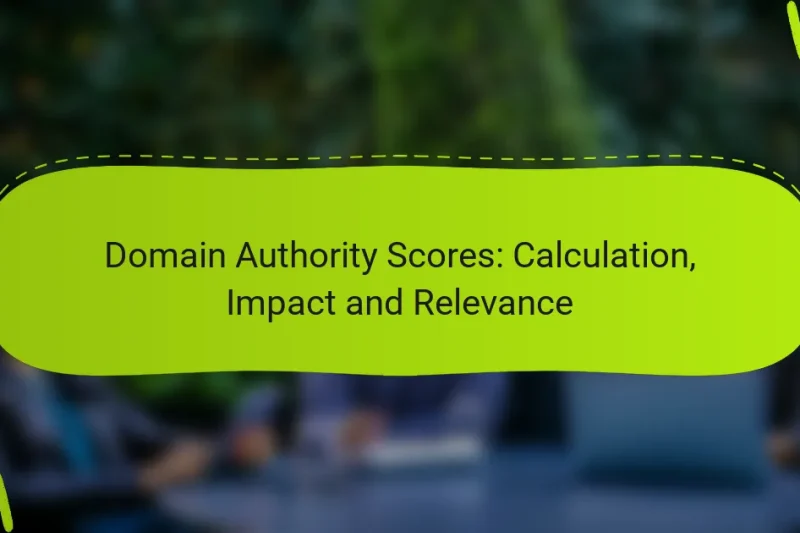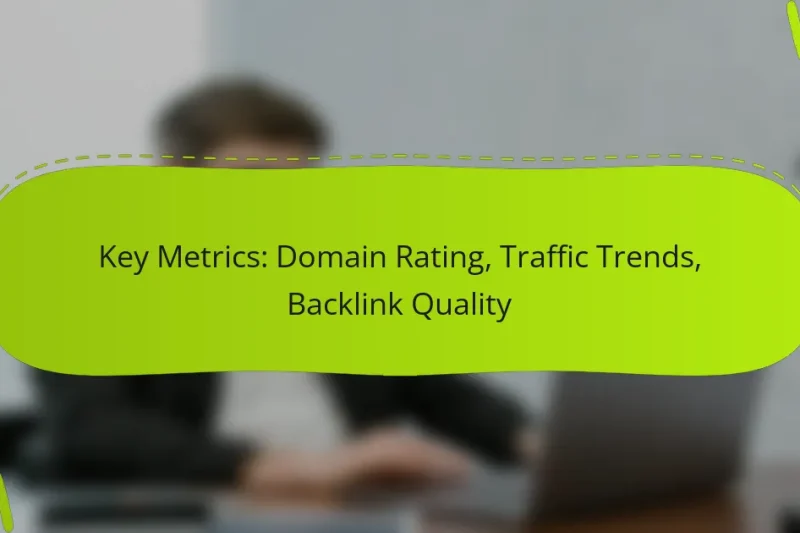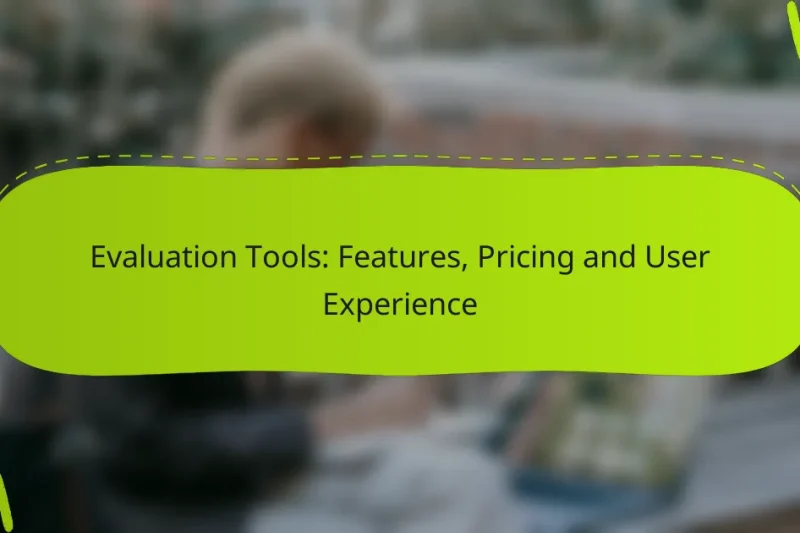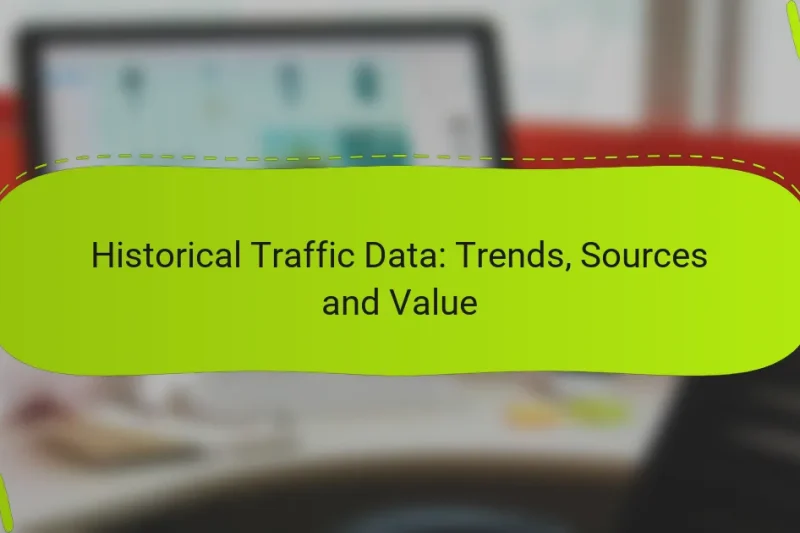Domain age plays a crucial role in SEO performance, impacting search engine rankings and the perceived … Domain Age and Quality: SEO Impact, Trust Signals and PerformanceRead more
How to Evaluate Aged Domains Effectively
Evaluating aged domains is crucial for maximizing their potential in display advertising and SEO strategies. By analyzing key metrics such as domain authority, backlink profiles, and historical traffic data, you can identify domains that offer significant value. Utilizing specialized tools will further enhance your assessment, providing insights into the domain’s past performance and relevance in your niche.
Domain Authority Scores: Calculation, Impact and Relevance
Domain Authority Score is a crucial metric that evaluates a website’s potential to rank in search … Domain Authority Scores: Calculation, Impact and RelevanceRead more
Red Flags: Spam History, Penalties and Ownership Issues
Understanding the red flags associated with spam history, penalties, and ownership issues is crucial for maintaining … Red Flags: Spam History, Penalties and Ownership IssuesRead more
Key Metrics: Domain Rating, Traffic Trends, Backlink Quality
Understanding key metrics such as Domain Rating, traffic trends, and backlink quality is essential for optimizing … Key Metrics: Domain Rating, Traffic Trends, Backlink QualityRead more
Backlink Profiles: Safety Signals, Trustworthiness, Diversity
Understanding backlink profiles is essential for evaluating a website’s safety signals, trustworthiness, and diversity. By analyzing … Backlink Profiles: Safety Signals, Trustworthiness, DiversityRead more
Evaluation Tools: Features, Pricing and User Experience
Evaluation tools for display advertising are essential for understanding campaign performance and maximizing return on investment. … Evaluation Tools: Features, Pricing and User ExperienceRead more
Historical Traffic Data: Trends, Sources and Value
Historical traffic data plays a crucial role in shaping effective advertising strategies by offering valuable insights … Historical Traffic Data: Trends, Sources and ValueRead more
How to identify valuable aged domains for display advertising?
Identifying valuable aged domains for display advertising involves assessing various metrics that indicate the domain’s potential for traffic and engagement. Key factors include domain authority, backlink profiles, historical traffic data, niche relevance, and brandability.
Assess domain authority metrics
Domain authority (DA) is a score that predicts how well a domain will rank on search engines. A higher DA, typically ranging from 1 to 100, suggests a stronger likelihood of attracting organic traffic. Look for domains with a DA of 30 or higher for better advertising potential.
Tools like Moz or Ahrefs can provide insights into DA. Regularly check these metrics to ensure the domain maintains its authority over time.
Evaluate backlink profiles
Aged domains often have established backlink profiles, which can significantly influence their SEO performance. Analyze the quality and quantity of backlinks using tools like SEMrush or Majestic. Focus on domains with backlinks from reputable sites, as these can enhance your domain’s credibility.
Avoid domains with toxic backlinks, as they can harm your advertising efforts. Look for a diverse range of backlinks from various sources to ensure a robust profile.
Check historical traffic data
Historical traffic data reveals how much organic traffic a domain has received over time. Use tools like Google Analytics or SimilarWeb to assess trends in traffic. A consistent or growing traffic pattern indicates a potentially valuable domain for display advertising.
Be cautious of domains with sudden spikes or drops in traffic, as these can signal issues that may affect your advertising strategy.
Analyze niche relevance
Niche relevance is crucial when selecting aged domains for display advertising. Ensure the domain aligns with your target audience and industry. A domain that resonates with your niche can lead to higher engagement rates and better conversion.
Research the domain’s previous content and audience to gauge its relevance. Domains with a history of producing quality content in your niche are often more valuable.
Consider brandability and memorability
Brandability refers to how easily a domain can be turned into a recognizable brand. A memorable domain name can enhance your advertising efforts by making it easier for users to recall and revisit your site. Look for short, catchy names that are easy to spell and pronounce.
Avoid domains that are overly complex or similar to existing brands, as this can lead to confusion and potential legal issues. Aim for a name that stands out while still being relevant to your niche.
What tools can help evaluate aged domains?
Several tools can effectively evaluate aged domains, focusing on their backlink profile, traffic data, and authority metrics. Utilizing these tools will provide insights into the domain’s history and potential value for SEO and marketing strategies.
Use Ahrefs for backlink analysis
Ahrefs is a powerful tool for analyzing the backlink profile of aged domains. It allows you to see the total number of backlinks, referring domains, and the quality of those links, which is crucial for assessing a domain’s authority and trustworthiness.
When using Ahrefs, pay attention to metrics such as the Domain Rating (DR) and the number of dofollow links. A DR above 30 is generally considered a good indicator of a domain’s strength. Additionally, look for any toxic backlinks that could harm your SEO efforts.
Leverage SEMrush for traffic insights
SEMrush provides valuable traffic insights for aged domains, helping you understand their organic search performance. You can analyze estimated traffic levels, top keywords, and competitor comparisons to gauge the domain’s market position.
Focus on metrics like organic search traffic and keyword positions. A domain with consistent traffic over time, especially for relevant keywords, indicates a potentially valuable asset. Be cautious of sudden traffic spikes, as they may suggest manipulation or penalties.
Utilize Moz for domain authority
Moz offers tools to evaluate the domain authority (DA) of aged domains, which predicts how well a domain will rank on search engines. The DA score ranges from 1 to 100, with higher scores indicating a stronger likelihood of ranking well.
When assessing a domain’s DA, consider its age, backlink profile, and overall relevance to your niche. A DA score above 40 is typically seen as a solid foundation for SEO efforts. Keep in mind that DA is a comparative metric, so it’s useful to compare it with competitors in your industry.
What criteria should be considered in the evaluation process?
When evaluating aged domains, consider factors such as domain age, historical usage, SEO performance metrics, and market competition. These criteria help determine the potential value and effectiveness of the domain in achieving your online goals.
Domain age and history
The age of a domain can significantly impact its credibility and authority in search engines. Older domains often have established backlinks and a history of content, which can enhance their SEO potential. Check the domain’s registration date and any previous ownership to assess its background.
Additionally, investigate the domain’s history for any penalties or negative associations. Tools like the Wayback Machine can help you view past versions of the site, providing insights into its previous content and usage.
SEO performance metrics
Analyzing SEO performance metrics is crucial for understanding a domain’s current standing. Key metrics include Domain Authority (DA), Page Authority (PA), and backlink profiles. A domain with a high DA and a strong backlink profile is generally more valuable.
Use tools like Moz, Ahrefs, or SEMrush to gather data on these metrics. Look for domains with consistent traffic and a healthy backlink profile, avoiding those with sudden spikes or drops that may indicate issues.
Market competition analysis
Understanding the competitive landscape is essential when evaluating aged domains. Assess the level of competition in the niche or industry related to the domain. High competition may require more resources to rank effectively, while low competition could present easier opportunities.
Research competitors using tools like Google Keyword Planner or SEMrush to identify keywords and their rankings. This analysis helps you gauge the potential return on investment and strategize how to leverage the domain effectively.
How to assess the risks of purchasing aged domains?
Evaluating the risks of buying aged domains involves understanding potential penalties, previous ownership, and the quality of existing content. Each of these factors can significantly impact the domain’s value and its future performance in search engines.
Identify potential penalties
Before purchasing an aged domain, check if it has faced any penalties from search engines like Google. Domains that have been penalized may struggle to rank well, affecting your investment.
Use tools like Google Search Console or third-party services to identify any past penalties. Look for signs of manual actions or algorithmic penalties that could hinder the domain’s visibility.
Examine previous ownership
Understanding who owned the domain previously can provide insights into its history and potential risks. If the domain was previously owned by spammers or involved in unethical practices, it may carry a negative reputation.
Research the domain’s ownership history using WHOIS lookup tools. Look for red flags such as frequent changes in ownership or associations with blacklisted websites.
Review existing content quality
Assessing the quality of content on the aged domain is crucial. High-quality, relevant content can enhance the domain’s authority, while low-quality or irrelevant content can lead to penalties.
Evaluate the existing content for originality, relevance, and engagement. Consider whether the content aligns with current SEO best practices and if it meets the needs of your target audience.
What are the benefits of using aged domains in advertising?
Aged domains can significantly enhance advertising efforts by providing established authority and credibility. They often come with existing backlinks and traffic, which can lead to improved visibility and lower costs in marketing campaigns.
Improved SEO rankings
Aged domains typically have a history of use that search engines recognize, which can lead to better SEO rankings. This is due to their established backlinks and domain authority, making it easier for new content to rank higher in search results.
When evaluating an aged domain for SEO benefits, consider its backlink profile, domain age, and previous content relevance. Tools like Ahrefs or Moz can help analyze these factors, providing insights into the domain’s potential for driving organic traffic.
To maximize SEO gains, focus on domains with a clean history, avoiding those that have been penalized or associated with spammy practices. A well-chosen aged domain can boost your site’s authority and accelerate your advertising success.






